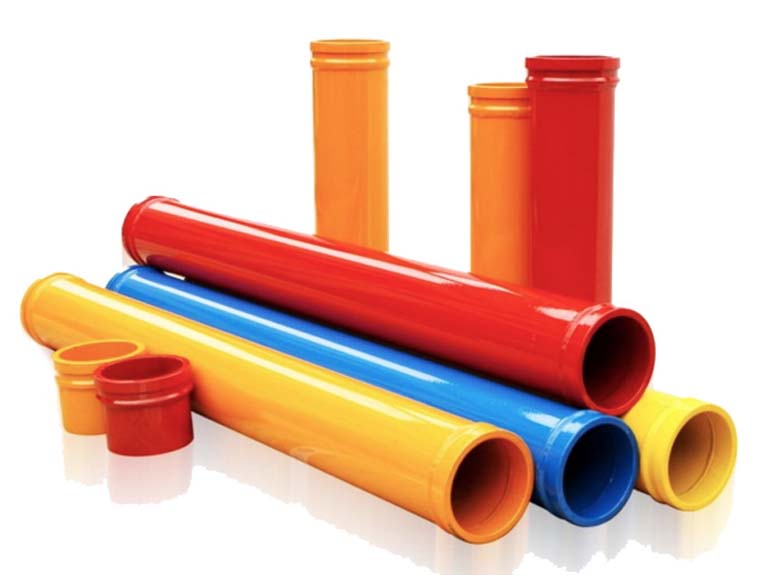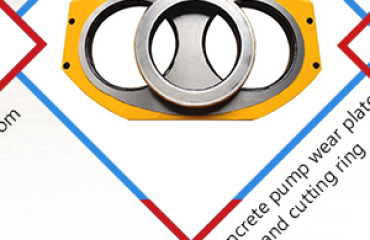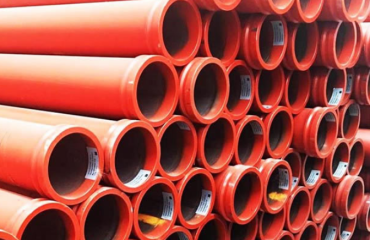
Elimination of concrete pump pipe blockage failure
In the concrete pouring operation, due to improper use, the equipment Concrete pump pipe is blocked, which not only affects the progress of the project, but also directly affects the quality of the project.
First, the cause of Concrete pump pipe blockage
Under normal conditions, the concrete forms a columnar fluid in the center of the pumping pipe and flows in a suspended state. The surface of the fluid is covered with a layer of cement slurry, which acts as a lubricant in contact with the wall of the tube, with substantially no relative movement between the aggregates. When some aggregates in the coarse aggregate are hindered, the speed of the subsequent aggregates is gradually slowed down due to the influence, resulting in the formation of coarse aggregates in the pipeline, and the mortar supporting the coarse aggregate is squeezed away. Filled by small aggregates. In this way, the aggregate density is increased, so that the aggregate in the section of the pipeline expands radially along the pipeline, the lubricating layer of the cement slurry is destroyed, the movement resistance is increased, and the speed is slowed until the movement stops and the blockage occurs.
Second, the determination and elimination of the closure position of Concrete pump pipe
(1) Blockage at the feed inlet
Phenomenon: The pumping action and hydraulic system are normal, there is no abnormal sound and vibration, and there is a large aggregate or agglomeration in the hopper, which is stuck or arched at the feeding port and blocked.
Remedy: Reverse the pump to destroy the agglomeration, return the concrete to the hopper and stir again, then pump forward. If it does not work, it needs to be manually cleaned up and excluded.
(2) Blockage at the discharge port of the distribution valve
Phenomenon: The pumping system is suddenly interrupted, and there is abnormal sound. The equipment has strong vibration, but there is no corresponding vibration in the pipeline.
Remedy: Pour 15~30L of cement slurry into the hopper, and start the pump repeatedly in the forward and reverse directions to force the passage to open. If this method is invalid, it can only be manually removed, remove the connected tube, and remove the debris in the valve.
(3) Blockage of S pipe valve
Phenomenon: The blockage of the S-tube valve is gradually formed. The main reason is that after pumping the concrete, it is not flushed with high-pressure water in time, causing the concrete to remain in the S-tube. The length of the day is gradually thickened, and the deposit is consolidated, causing blockage.
Remedy: After pumping concrete, be sure to rinse the pump and S tube with high pressure water. When the flushing is ineffective, a tapping can be used to remove the residue until it is completely clean.
(4) Blockage of concrete conveying pipeline
Phenomenon: When the conveying pressure is gradually increased, and the material level of the hopper does not fall, the outlet of the pipe does not discharge, the pump vibrates, and the pipeline is accompanied by strong vibration and displacement, it can be judged that the pipe is blocked.
Judgment of the blockage: Blockage generally occurs in bends, cones, and areas with vibration. At this point, you can use a small hammer to tap along the pipeline, the sound is dull at the blockage; the sound is crisp and normal. Listening with the ear, there is a rustling sound as normal, and a harsh sound is a blockage.
Remedy: When the Concrete pump pipe is clogged, the method of repeating the forward and reverse pumps should be taken immediately, and the concrete at the pump outlet should be sucked back into the hopper and then re-mixed. It can also be knocked with a wooden hammer, combined with the positive and negative pumps to make it clear; when the above method is invalid, it indicates that the blockage is serious. After identifying the blockage section, remove the pipe and flush it with high-pressure wind or heavy hammer or high-pressure water. After thorough cleaning, connect the pipe and continue pumping concrete.




You must be logged in to post a comment.